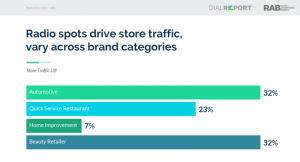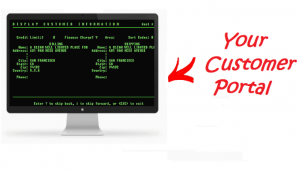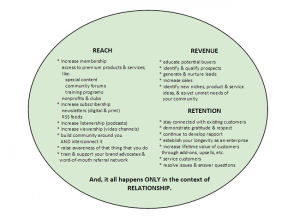
Previously, we talked about all the different types of bots that are crawling the web. While some bots are actually helpful in catching content thieves and crawling pages for search engines, there are also plenty of malicious bots out there. Bad bots can generate false ad impressions, serve spam and malware, and steal content and information. So, you know these bots are bad, but how exactly are those bots hurting your website?
Now it’s time to take a more in-depth look at what exactly a malicious bot attack can mean for you.
Bots Can Hurt Your SEO Ranking
Your website’s SEO ranking is dependent on a lot of things: content quality, reliable backlinks, fast load time, etc. But bots can crawl your website and cripple the functionality and reliability of your website to the point where your SEO ranking plummets.
They Scrape Your Content and Post It Elsewhere. All that unique, high quality content that you craft for your site can easily be stolen by bots and posted elsewhere without your permission or any attribution. In fact, you might not even realize your content has been stolen unless you’re actively searching for it.
This can kill your SEO ranking because search engines will see it as plagiarised, and your site could be punished for having duplicate content, even if you’re the original author.
They Can Overload and Crash Your Site. They’re called DDoS attacks, and they can make your website completely inaccessible. They occur when a number of infected computers band together to attack a single target, exhausting your network connections and server resources, which can cause website outages.
Statistic Source: Digital Attack Map
Depending on how long your site is down, this can eventually hurt your SEO ranking. A short outage won’t affect your rankings, but if your site is the victim of several DDoS attacks over an extended period of time, your rankings could take a serious hit. You’ll want to make sure you secure your website as quickly as possible to ensure you don’t fall victim to further attacks.
They’ll Slow Your Site Load Time. Bot scripts are hefty chunks of data and extremely invasive, so they slow down the load times of your site. Not only does this frustrates users, but it also hurts your quality score.
Bots Can Skew Your Analytics
Your site analytics are essential for knowing how much traffic your site gets, how effective your advertising is, and the overall success of your site. Bot interactions can skew these analytics and give you false data.

They’ll Fill out Your Site Forms. Website forms can offer you information on your customer base and the traffic coming to and from the website. But, when bots infiltrate them, you’ll get incorrect information that can alter your customer database. Plus, it’ll look like you have more leads than you actually do.
They Engage With Your Ads. More commonly known as click fraud, bots will find your ads and then click on them, which can alter your advertising stats and falsify your CTR. This essentially renders your ads useless, because you’re spending money on advertising that isn’t bringing in converting traffic.
Bots Can Infect Your Customers’ Devices
If your site is infected with malware or full of suspicious download prompts, then anyone visiting your site is at risk for being infected as well.
They Inject Malware Into Your Site’s Code. Hackers can use bots to inject malware codes or links into the HTML header in your site. Spotting it can be hard, too, because it might not look much different from your site’s code.
Chances are, you won’t notice the malware on your site until Google detects it. You might see a drop in traffic because Google will warn users about malware before sending them to your site, so they’ll probably choose to turn back and go elsewhere.
Injected codes can also mean that bots are making it possible for hackers to steal your traffic. Your visitors could find themselves redirected to a site they never intended to visit, which is what the MosQUito jQuery script does when it infects your WordPress or Joomla-based site. A new example of ad fraud, the MosQUito script steals the legitimate traffic coming into your site, either from search or paid advertising, and then directs it elsewhere.
Bots Can Trick You Into Clicking. It’s called clickjacking, and bots will use it to trick you into clicking by making you think you’re actually clicking on something else. Hackers will use bots to change the code of your site and overlay a transparent page over a web page that you’re visiting. So, while you think you’re clicking to win an iPad, you’re actually clicking on a link that automatically donates your money to the hacker.
Source: Troy Hunt
The overlay page looks completely normal, but when you click on something, such as a video play button, you’re actually clicking on the overlay page. These tricky clicks can trigger one-click orders from Amazon, activate electronic transfers, deceptively “like” a Facebook or Twitter profile, or even prompt a download of malware.
Bots Can Destroy Your Bottom Line
The average cost of a website security breach is $ 300,000, and bots amplify security threats because they work much faster than a hacker who tries to bypass security manually. While click fraud can certainly drain your ad budget, there are other ways bots can harm your revenue as well.
Price Scraping Gives the Edge to Competitors. Bots will crawl your site and collect information about what you’re selling and how much you’re selling it for, and then report that information back to your competitors. This prevents you from ever having the edge over your competition. They’ll always be one step ahead of you in pricing their products lower.
You’ll Be Charged More for Advertising. Bots aren’t only used to just hack into your site; they can also mess with your analytics, which can affect the cost of your advertising.
For publishers, this means that they can charge more for advertising, because higher traffic rates dictate higher ad prices. But for advertisers, this means they’re paying an artificially inflated price for essentially fake traffic. Bot interactions with your ads can also skew A/B test results.
They’ll Collect Your Site Data. These bots are called data aggregators, and they’ll steal all that research you spent tons of money to gather and then release it for free. This quickly dilutes the value of your data and makes it almost impossible for you to profit from it. Plus, it’s extremely difficult to fight data aggregators, which can quickly grow into a multi-million dollar lawsuit.
Bots Can Cripple Your Reputation
When customers fill out forms and make purchases from you, they’re trusting you with their personal and bank account information. Bots can get into your site and steal that data, leaving your customers at risk and your trustworthiness destroyed.
They’ll Steal Personal Information. Giving away personal information to a website, even if it’s a well-known trusted site, is a huge concern for web users. It’s a big concern for website owners, too, who want to make sure they aren’t risking their customers’ trust by misusing sensitive information.

Bots however can harvest what information users put into comments and forms, which they can then use for a spam campaign or sell to competitors. Some of these bots can even skim credit card data from your site. You need to be extra careful in making sure bots can’t gain access to this information by constantly updating your site security.
They’ll Spam Your Site With Poor-Quality Backlinks. Bots do this by selling links from your site to clients and then commenting on your blog posts with their clients’ poor-quality links.
Sometimes, the links are harmless, but they usually take your readers back to questionable websites, where scammers are peddling anything from fake pills to malware. Scammers will even use a buffer site so your audience doesn’t realize they’re on a more sinister site at first.
They Can Get Your Site Blacklisted. From slowing down your site to injecting malware or clickjacking, all of these malicious activities can break the trust of your site’s audience.
Bots can load your site with so much garbage that it ultimately discourages any legitimate visits from customers. This could potentially get your site blacklisted and destroy everything you’ve done to develop a trusted site.
Bad Bots, Bad Bots, Whatcha Gonna Do?
So, how do you spot bad bots and what can you do about it? There are some preventative measures you can take:
- Block Users and Delete Spam Comments. While not perfect, it’s fairly easy to go in and delete spammy comments on your blog. This way, your readers are at a lower risk for becoming victims of malware downloads.
- Get a Traffic Filter for Your Ads. With traffic filtration, you can make sure your ads are only being shown to relevant viewers and not bots.
- Block the Bot’s IP Address. While not entirely effective, because most bots use numerous IP addresses, once you identify a bot, block that IP address.
- Search for Your Site in Incognito Mode. Try to see what your customers see to help you get a better idea of their user experience, and make you aware of bots lurking behind tricky click prompts.
- Monitor Your Search Ranking. If you suddenly see your SEO rank drop, your site might be infested with bots, and you’ll know to check your site’s code and make sure its security is up to date.
- Test Your Site Speed. If your site suddenly and inexplicably slows down, it could be because hackers are using bots to take over your site’s code.
- Use Copyscape. It’s quick and easy to use, and it’ll search for copies of your site on the internet. Then you can request that the site remove the copied content so it doesn’t affect your rank.
- Block the Known Bots From Your Site. You can copy a starter list of bad bots into the .htaccess file of your website to block any of the more commonly known bots from accessing your site. You can also continue to add to this list and modify it as you need to.
While there’s no foolproof way to block all bad bots all the time, you can take preventative measures to make sure your site’s security is up-to-date and the user experience flows smoothly.
Digital & Social Articles on Business 2 Community(103)






